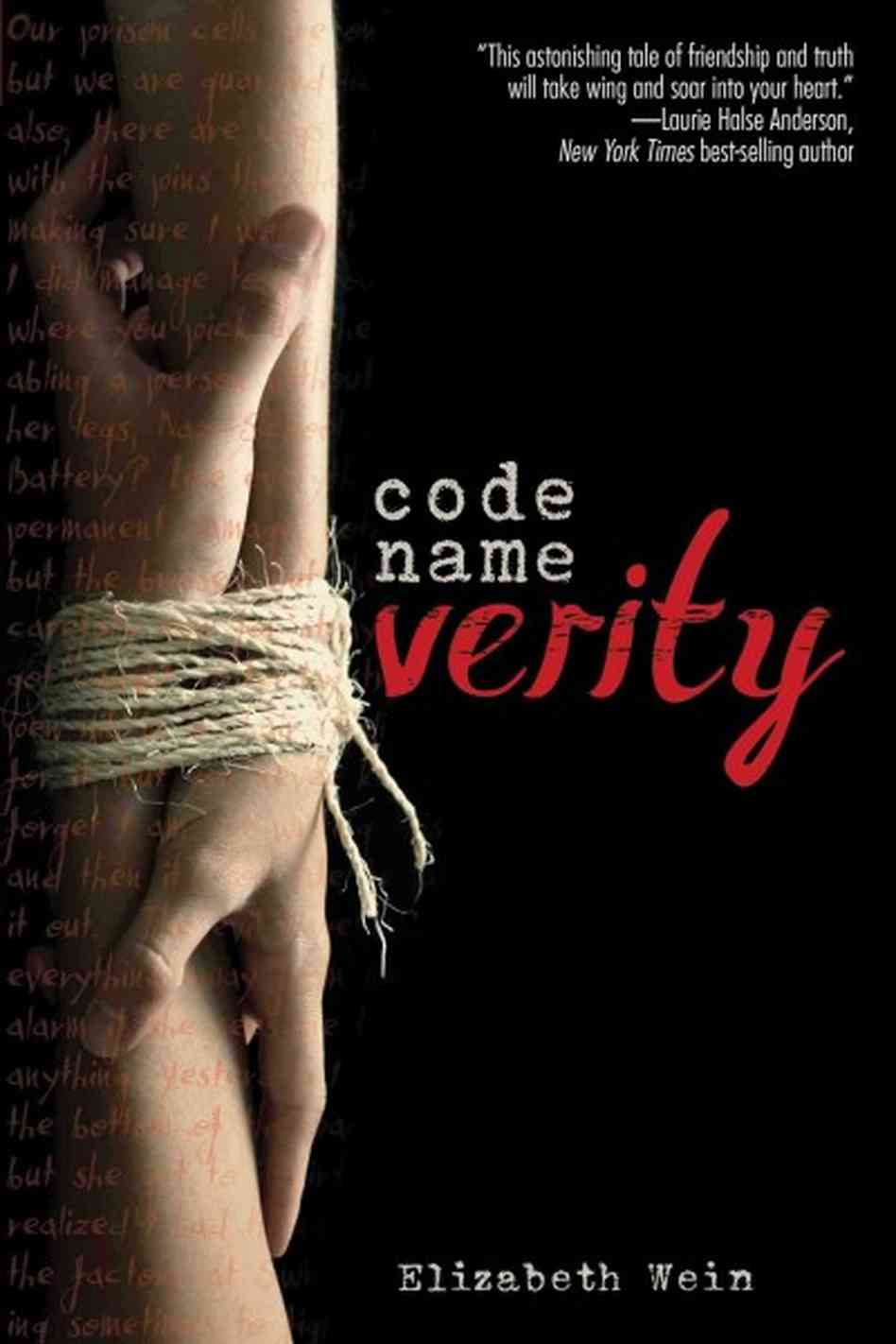Title: Code Name Verity
Author: Elizabeth Wein
Genre: Young Adult Historical Fiction
Quotation: “It’s like being in love, discovering your best friend.”
Would recommend to: any history fan that loves a good twist.

The title, much like the book, is allusive in nature but focuses on the book much more than readers will originally believe. Code Name Verity, written by Elizabeth Wein, is an intricate story about relationships between people that evolves around codes, names, and “Verity,” known by many names, but I shall call her Queenie.
The title, much like the novel, is something readers won’t fully understand unless they give it a second read. All aspects of this novel are doubled-sided — readers pick up a whole different meaning to Queenie’s words when they read the novel for a second time. This makes Code Name Verity a shocking first-read and a ultimately very revealing second-read.
This novel takes a look at World War II through the eyes of teenage British girls in France thrown into a war they are much too young for — a perspective that is largely overlooked when writing about the era. While Wein directly writes about Nazi-occupied France during World War II, what she’s truly writing about is friendship and duty to each other. She develops a story around the friendship between a pilot, Maddie, and a wireless operator, Queenie.
Apart from this novel, Wein is an author of a plethora of short stories and young adult novels, two of which are accompaniment novels to Code Name Verity. Many of her stories involve similar focuses on the development and cultivation of friendship.
Readers have a chance to see the girls’ relationship blossom during one of the darkest times in history. One can’t help but smile over their chats about fears and the strong bond they form in such a trying time. They have a connection that challenges their thoughts, and readers’ perceptions, about loyalty and what true friendship really means.
The story is written from Queenie’s perspective as a form of stream of consciousness while she’s being held in a Nazi interrogation building. Readers get a sense of the situation she is in, but she cloaks her torture in talk of airplanes and her relationship with Maddie. She describes her captures and torturers, but rarely in a way that makes readers hate them, rather in a way that makes readers hopeful — hopeful that they will release Maddie and cease the cruel punishment they bestow upon her.
Wein does an astounding job of creating complex characters and giving them each a plausible and interesting background. SS-Hauptsturmführer von Linden is the main Nazi that interrogates Queenie. Readers are encouraged to understand that von Linden is essentially evil, but Wein does an interesting job of impressing humanistic characteristics about him to her readers, such as him having a daughter and him continuously giving Queenie “one more week” to continue to tell her story. These characteristics are what make readers hopeful for his redemption.
Apart from Maddie and Queenie, Wein makes a concentrated effort to inform readers about the character of Engel, which means Angel in the German language, the translator for Queenie’s writings. These emphasized characters and the relationships they have throughout the story with Maddie and Queenie further the meaning of the text and the underlying message of the importance of relationships and human understanding.
Wein’s writing was also laden with allusions. They are scattered throughout the text, but the most prominent one is that to Peter Pan. Because flight is a common motif in the novel, Peter Pan translates easily, but Wein also makes references to Queenie’s family resembling the Darlings. Queenie’s mother says to Maddie, “Please come back soon. The window is always open.” This is a blatant reference to the window in the Darling’s nursery in Peter Pan. These allusions ground readers in the understanding of the time period and help them understand what the girls cultural influences were like during the time. The more popular allusions, such as Peter Pan, also help readers, at least they helped me, feel like they understand and can relate to more of the text.
While this story was originally published and marketed as a young adult read, I wouldn’t hesitate to recommend it to older readers as well. Because the content of the book is rather mature having taken place in an interrogation center in Nazi-occupied France and because the plotline is very complex, I think readers of any age can benefit from this story.
Some books have a time-stamp on them — but Code Name Verity, among many others, is not one of those books. Its dealings with friendships and the importance that relationships have transcend time. And, although it’s not the central focus on the novel, Wein’s perspective on World War II impresses upon readers how far the effects of the war reached. Although Wein talks about a specific time period, she really writes about themes such as friendships, strength, and loyalty that have no boundaries or age limits. She begins her novel with “I AM A COWARD,” but she ends it with anything but cowardice.
Happy reading,
Kimberly
(This is a review I wrote for my YA lit class. Let me know your thoughts.)

[…] “Rose Under Fire,” the companion novel to “Code Name Verity,” which I reviewed a while […]